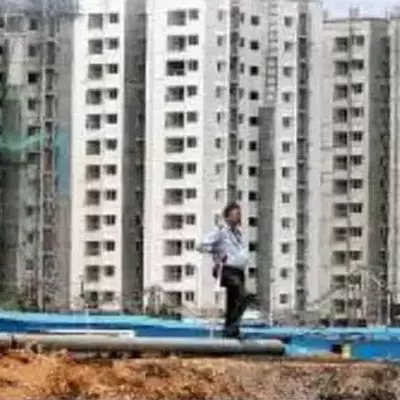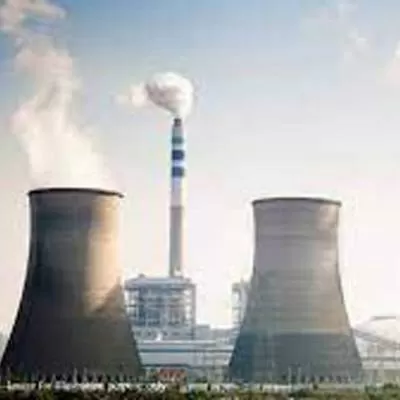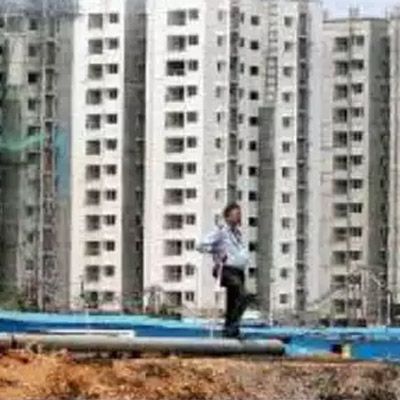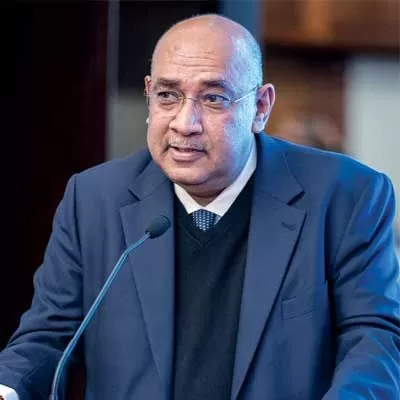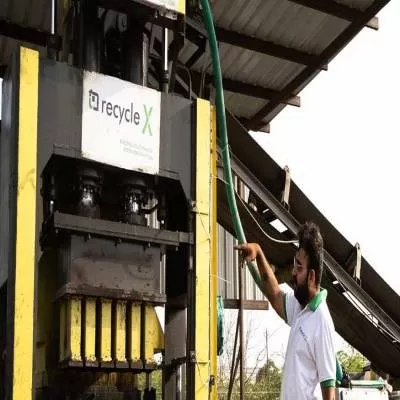- Home
- Infrastructure Urban
- ECONOMY & POLICY
- The Town That Lives Forever

The Town That Lives Forever
Nirvana´ is the word that means, and describes, Amaravati. And Andhra Pradesh´s new capital is set to be the focal point of the state´s development.
The state government has an identified land bank of 3 lakh acre for Amaravati city and is consolidating an additional industrial land bank of about 7 lakh acre. It has pooled over 33,000 acre from farmers and landowners in Guntur and Krishna districts, offering them benefits like share in developed land. It will utilise its share of land to develop world-class infrastructure and common amenities, including the capital complex. The project is expected to be promoted on the PPP model. The Centre for Liveable Cities (CLC) and Singapore Cooperation Enterprise (SCE) will help develop institutional capacity in urban governance through training programmes for officials. International Enterprise (IE) Singapore had signed an MoU with the Infrastructure Corporation of Andhra Pradesh to prepare a master plan for the new capital. Japan and Andhra Pradesh have also signed an MoU to promote investments by Japanese companies.
The Core Capital Region, proposed to be taken up in Guntur district, will come up on the Krishna riverfront across 16.9 sq km. Phase-I, expected to have eight growth corridors, will be completed by 2019 and serve about 40 lakh people. Development works will be executed by a master developer. ´The master plan has come out really well. It will be one of the best cities in the country,´ says NR Alluri, Promoter Director, NCC Ltd. However, according to Bollineni Seenaiah, Managing Director, BSCPL, ´There is no clarity as yet; the master plan needs to be put on the ground.´
Connecting the main capital, five bridges will be constructed on river Krishna with four and six lanes. Buildings will come up on the waterfront. There will be a metro rail with transit-oriented development along its network and core areas; the network will be 135 km on full development. Phase-I is now being finalised.
Doors of opportunity
Undoubtedly, the development will boost growth across sectors. ´The roads sector, followed by electricity, water, technology and railways, will definitely pick up,´ affirms Biju Kadapurath, Director-Government and Public Sector, PwC. ´Basic infrastructure should be developed at one go,´ observes Seenaiah. ´Only then will people begin to think about plans and developments.´
There is a huge opportunity for contractors and builders. As Kadapurath says, ´Even if we consider 5 per cent of the 30,000 acre taken by the government as being constructed, it is a lot of construction. A mix of investment, from low-cost housing to iconic buildings - that´s where the opportunities lie.´
For his part, Alluri says, ´We are definitely looking at handling road projects, water treatment plants and pipelines, as well as buildings.´ And, Seenaiah adds, ´We want to take up some roads and infrastructure work as well as building projects. But we will have to wait and see.´
Costs and challenges
The construction of the new capital may cost in excess of $2 billion as per the master plan. It spreads over about 80 km.
An existing challenge is the consent of tenant farmers. However, the state has promised them compensation in return with commercial land after completion of the capital, besides an annual compensation, loan waiver and jobs to youth. Another challenge is attracting people there, as Kadapurath points out. ´Being a Greenfield city, Amaravati will have its own challenges,´ he adds.That said, Amaravati stands at the cusp of opportunity and progress. With its successful development, expectations for existing cities to become smarter will only rise.
AMARAVATI in the making
First phase: Expected to be completed by 2019.
Core capital area: Spread across 16.9 sq km.
Open and green spaces: To cover 40 per cent of capital area.
Population: To cater to over 11.5 million; Phase-I to cater to about 40 lakh.
Mega city: Linked to seven regional centres.
Internal road network: 1,000 km
Metro rail network: 12 km
CW explores the opportunities to develop Amaravati as a futuristic world-class city. Nirvana´ is the word that means, and describes, Amaravati. And Andhra Pradesh´s new capital is set to be the focal point of the state´s development. The state government has an identified land bank of 3 lakh acre for Amaravati city and is consolidating an additional industrial land bank of about 7 lakh acre. It has pooled over 33,000 acre from farmers and landowners in Guntur and Krishna districts, offering them benefits like share in developed land. It will utilise its share of land to develop world-class infrastructure and common amenities, including the capital complex. The project is expected to be promoted on the PPP model. The Centre for Liveable Cities (CLC) and Singapore Cooperation Enterprise (SCE) will help develop institutional capacity in urban governance through training programmes for officials. International Enterprise (IE) Singapore had signed an MoU with the Infrastructure Corporation of Andhra Pradesh to prepare a master plan for the new capital. Japan and Andhra Pradesh have also signed an MoU to promote investments by Japanese companies. The Core Capital Region, proposed to be taken up in Guntur district, will come up on the Krishna riverfront across 16.9 sq km. Phase-I, expected to have eight growth corridors, will be completed by 2019 and serve about 40 lakh people. Development works will be executed by a master developer. ´The master plan has come out really well. It will be one of the best cities in the country,´ says NR Alluri, Promoter Director, NCC Ltd. However, according to Bollineni Seenaiah, Managing Director, BSCPL, ´There is no clarity as yet; the master plan needs to be put on the ground.´ Connecting the main capital, five bridges will be constructed on river Krishna with four and six lanes. Buildings will come up on the waterfront. There will be a metro rail with transit-oriented development along its network and core areas; the network will be 135 km on full development. Phase-I is now being finalised. Doors of opportunity Undoubtedly, the development will boost growth across sectors. ´The roads sector, followed by electricity, water, technology and railways, will definitely pick up,´ affirms Biju Kadapurath, Director-Government and Public Sector, PwC. ´Basic infrastructure should be developed at one go,´ observes Seenaiah. ´Only then will people begin to think about plans and developments.´ There is a huge opportunity for contractors and builders. As Kadapurath says, ´Even if we consider 5 per cent of the 30,000 acre taken by the government as being constructed, it is a lot of construction. A mix of investment, from low-cost housing to iconic buildings - that´s where the opportunities lie.´ For his part, Alluri says, ´We are definitely looking at handling road projects, water treatment plants and pipelines, as well as buildings.´ And, Seenaiah adds, ´We want to take up some roads and infrastructure work as well as building projects. But we will have to wait and see.´ Costs and challenges The construction of the new capital may cost in excess of $2 billion as per the master plan. It spreads over about 80 km. An existing challenge is the consent of tenant farmers. However, the state has promised them compensation in return with commercial land after completion of the capital, besides an annual compensation, loan waiver and jobs to youth. Another challenge is attracting people there, as Kadapurath points out. ´Being a Greenfield city, Amaravati will have its own challenges,´ he adds.That said, Amaravati stands at the cusp of opportunity and progress. With its successful development, expectations for existing cities to become smarter will only rise. AMARAVATI in the making First phase: Expected to be completed by 2019. Core capital area: Spread across 16.9 sq km. Open and green spaces: To cover 40 per cent of capital area. Population: To cater to over 11.5 million; Phase-I to cater to about 40 lakh. Mega city: Linked to seven regional centres. Internal road network: 1,000 km Metro rail network: 12 km


